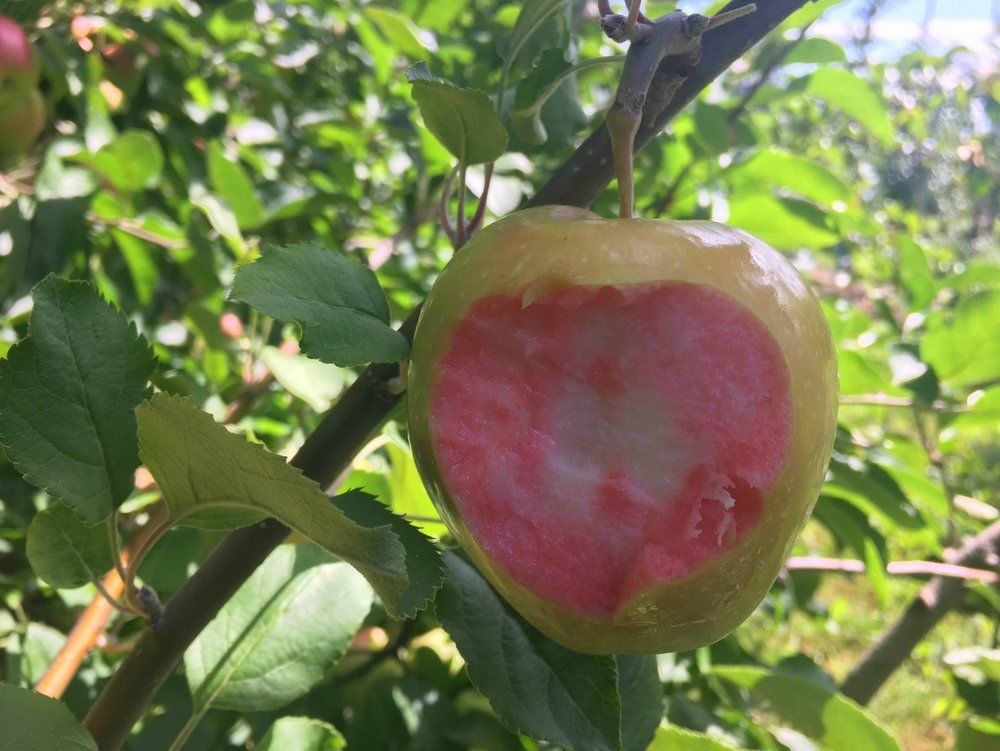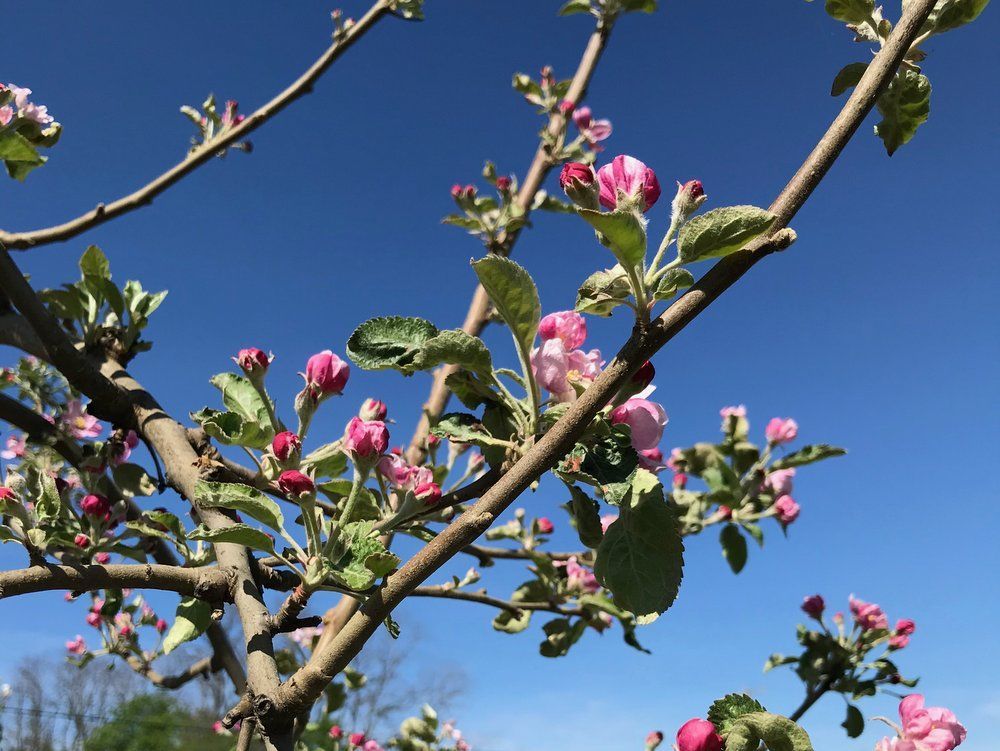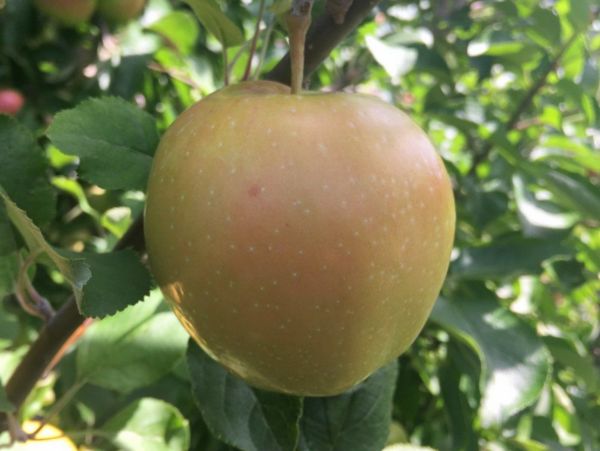An attractive, highly disease-resistant apple, ideal for organic growers.
Pink Pearl Apple on G.890 (Spring 2024)
A pretty pink-fleshed apple created by Albert Etter. Also known as Etter Surprise.
Pink Pearl is biennial tending, low vigor, and somewhat disease susceptible. It is hardy to zone 4. It makes a great landscape tree; the late bloom is a profusion of pink-crimson flowers.
The apple is medium sized, rosy cream, with flesh that is streaked with a startling bright pink. It is a wonderful table apple that makes a beautiful and tasty pink applesauce. The flesh is crisp, fine-grained, and aromatic with a delicious sweet-tart flavor. Some say it has a sour berry notes.
Pink Pearl was first introduced in 1944 by Albert Etter (1872-1950), a Californian plant breeder famous for breeding red-fleshed apples. Etter was a "visionary" in the sense that he rejected the conventions of fruit breeding and sought out the most exotic and peculiar plant material with a view to revolutionizing the commercial market. After obtaining scion of the red-fleshed apple "Surprise" around 1900, Etter set about breeding dozens of red-fleshed seedlings. Pink Pearl (originally Test Seedling #39) is today the most commonly grown product of this breeding program.
In comparison to the red-fleshed varieties developed by Niels Hansen, Etter's Surprise progeny are less pigmented but superior in terms of eating quality. An excellent discussion of Etter's career can be found at Albert Etter and the Pink-Fleshed Daughters of 'Surprise' by Ram Fishman.
The Fruit
Fruit Type
Category: Apple
Subcategory:
Cold-Hardy, Hot-Climate, Red Flesh
Fruit Uses & Storage
Uses: fresh eating, cider, sauce
Storage duration: less than one month (approximate, depending on storage conditions)
Fruit Appearance
Skin color: yellow
Flesh color: pink
Fruit Origins
Parentage: Surprise seedling
Origin: Humboldt, California
Introduced in: 1944
Introduced by: Albert Etter
The Environment
Calendar & Geography
USDA zones: 4 - 8
Chill hours: Not yet determined
Ripening date: Sep 15 (approximate, in New York State) + 0 days after McIntosh
Tree Height & Spacing
glossary
Rootstock: G.890 Rootstock
Rootstock size class: Half-Standard (60% of Standard)
Tree spacing (natural spread of tree): 18'
Good for wildlife planting? N
Diseases & Pests
glossary
Fireblight: Susceptible
Apple Scab: Susceptible
Pollination
Pollination Factors
glossary
Bloom group: 1
Is it self-fertile? N
Is it fertile? Y
Ploidy: Diploid
Rootstock size class:
Half-Standard (60% of Standard)
Pollination Partners
This table shows the first few results from a full search for pollenizers of Pink Pearl Apple on G.890. Please see our Pollenizer Search to run other queries and read how the application uses various factors. Also read more about fruit tree pollination.
See all pollination matches for Pink Pearl Apple on G.890
Featured Products
A few things we're loving right now...
A full-flavored, freestone white peach.
One of America's oldest apples, good for storage, baking, and cider.
A widely-grown, large, yellow-fleshed nectarine.


















